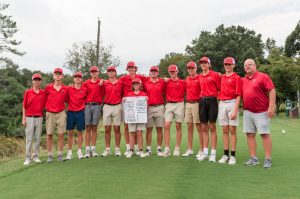CPR brings the breath of life
April 2, 2013
If you’ve ever applied for a position as a lifeguard or babysitter, you may have been asked to revive a dummy to receive an official CPR certification. Cardiopulmonary resuscitation, or CPR, is a combination of chest compressions and mouth-to-mouth breathing used to restore the circulation of oxygen to the brain to prevent permanent brain damage or death.
CPR is vital in emergencies, and many FHS students are taking their first steps into the world of emergency medical training. Warrenton Fire Department’s Jim Farkas, who has been in fire service for 45 years, stresses the importance of CPR knowledge in many careers, including work as a firefighter.
“When you’restarting in the firefighting business, the first thing they make you learn is CPR,” Farkas said. “It’s such an important part of emergency response. Even as a trainee, they won’t let you ride a fire truck without having basic CPR knowledge.”
Fellow firefighter Adam Dunaway agrees with Farkas and believes emergancy training is an important facet of rescuing.
“Those are the people that help you if you are cut and bleeding,” Dunaway said. “If you are in an accident and something happens to your body, those will be the people that will be taking care of you.”
While the fire department assists in showing trainees the ropes, EMT training is offered in high schools throughout the county.
“The quickest way to get involved would be volunteering for your local station,” Dunaway said. “To kids who want to try it out and kids who haven’t even thought about it, it’s an adrenaline rush. You get to help your community, and it really shows you how to be selfless and more involved with other people. It’s a great feeling to be able to help somebody out in their worst moment.”
Another way to become CPR certified as a student is through the Introduction to Health and Nursing Aid classes offered at FHS, which include CPR, AED (Automatic External Defibrillator), and first aid in their curriculum.
“[Certification] is through the American Heart Association,” said nursing teacher Margaret Blevins, who is also a registered nurse and consultant at Fauquier Hospital. “It is a very prescribed course that, as an instructor, you can’t really vary from it. You have to go through the practice, learn the theory, and at the end, there is a skills check-off with the instructor,”
Blevins has applied her CPR skills in real life situations, both in and out of the hospital.
“I’ve come across accidents in real life, and used CPR once in an airport when a man [was in need],” Blevins said. “I’ve used it in several settings on infants, as well as adults.”
Historically, CPR used to involve a combination of pulse-checking and regulated mouth-to-mouth, but recent discoveries have shown that chest compressions alone are enough to save somebody’s life.
Senior Samantha Donahue was recently certified for CPR through the nursing class.
“[I took the class because] I figured it could always be useful,” Donahue said. “You could save so many lives with it; it’s a really good thing to know.”
Blevins agrees with Donahue that the benefits of CPR knowledge are worth the time and patience it takes to learn it.
“People who don’t know how to do it are at a disadvantage in helping their loved ones,” Blevins said.






